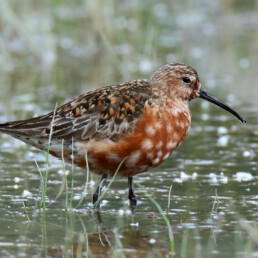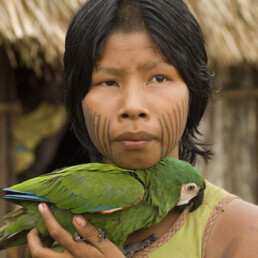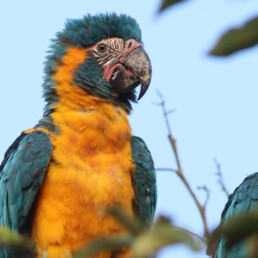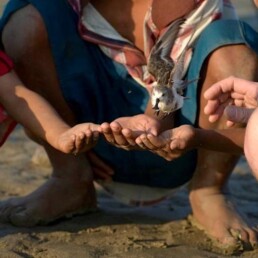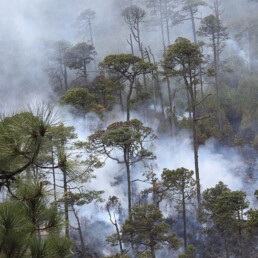Can Environmental Cooperation Survive in a Divided World?
International relations and cooperation between superpowers like the U.S., Russia, and China are at historic lows. Most of what we hear is about rivalry, tension, and military escalation. The prospects of a new Iron Curtain dividing the world are realistic, and only history will tell us if we have already crossed that point. However, even during the height of the Cold War, scientific and environmental cooperation between the USSR and the U.S. existed and served as a source of hope for peace and prosperity for humankind. Under the 1972 Agreement on Cooperation in the Field of Environmental Protection, the U.S. and the USSR worked together on wildlife conservation efforts, focusing on preserving biodiversity and protecting endangered species in their respective territories. Efforts to protect the Siberian tiger and the American bison were at the heart of that collaboration. American and Soviet scientists researched data and exchanged anti-poaching strategies; they also collaborated to understand the ecology, behavior, and population dynamics of the Siberian tiger. Can we still do this today?

A Siberian tiger photographed by a camera trap. Taken by Svetlana Sutyrina
A “spoonie” on the breeding grounds in Chukotka, Siberia, June 2015. photo by Mads Syndergaard
Spoony of peace
Saving the Spoon-billed Sandpiper Across Political Divides
In today’s context, it’s hard to find a more hopeful example of international collaboration than the effort to save the spoon-billed sandpiper. This small, critically endangered shorebird migrates across some of the most politically tense regions in the world—China, Russia, Myanmar, Bangladesh, Thailand, North Korea, and South Korea. Much like the symbolic dove carrying an olive branch, the spoon-billed sandpiper transcends borders and politics, uniting governments, conservationists, and local communities in the shared mission of preventing its extinction.
A Common Goal
The spoonie’s decline was rapid, primarily due to habitat loss from land reclamation and hunting. Today, with only around 100 breeding pairs left, its survival depends on conservation efforts spanning over 8,000 kilometers—from its breeding grounds in Russia’s Chukotka region to its wintering grounds in South and Southeast Asia. These efforts, involving multiple countries, share a common goal: halting the species' decline by 50% by 2025.
A Global Strategy
Ambitious goals require even more ambitious actions, and that is precisely what the multidisciplinary team of conservation scientists, coordinators, and strategists has been doing. Russian expedition teams, UK breeding programs, Chinese satellite tracking, and monitoring at key staging and wintering sites are all working together toward the common mission of creating a future for the spoon-billed sandpiper and millions of other migratory shorebirds of the East Asian-Australasian Flyway.
Conservation in Action
The scale, complexity, and urgency of the situation require diverse and immediate actions. Spoon-billed sandpiper migration is being tracked with satellite tags. A captive population has been established as a safeguard against extinction. Key sites in Myanmar, China and the South Korea have received protected status including some World Heritage Sites on the Yellow Seas of the latter two countries, covering an area of over 430,000 ha.

Spoon-billed Sandpiper hatchlings, photo: Pavel Tomkovich
Other significant efforts to protect the Spoon-billed Sandpiper include:
> Headstarting
A headstarting program for spoon-billed sandpipers has been underway since 2012, involving specialists collecting eggs from incubating birds in the wild, hatching and hand-raising the chicks in captivity to fledging age, and releasing the birds back into the wild. Headstarting efforts have released over 180 birds. This intervention protects the eggs and chicks during the particularly vulnerable incubation and rearing phases. Unfortunately, the ongoing Russia-Ukraine conflict has caused a pause in spoonie headstarting work. While headstarting activity is necessarily paused, the team has begun preparing for a potential return to full operations, hopefully in 2025, despite the existing challenges.
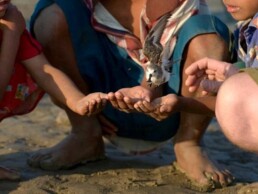
> Stopping Hunting
The EAAFP Spoon-billed Sandpiper Task Force is working with villagers in Myanmar and Bangladesh to ease the pressure of trapping. Good progress is being made to stop bird trapping on the spoon-billed sandpipers’ non-breeding grounds. Bird trappers sign agreements to cease hunting in return for small grants to buy fishing equipment. The East Asian-Australasian Flyway Partnership Spoon-billed Sandpiper Task Force estimates that as many as 80-90% of hunters in the Bay of Martaban, Myanmar (the most important wintering site in the world for the spoon-billed sandpiper), have now signed agreements to stop hunting and surrendered their trapping equipment. Advocacy work is raising the profile of the critically important intertidal wetlands in the Yellow Sea. Awareness-raising activities are introducing this incredible bird to children in the flyway. Annual surveys of breeding sites in Chukotka have been undertaken, with over 400 birds color-marked since 2012. A new breeding site, “Okeanskoe,” has also been discovered!

Net removal in South China
Are we up to the task?
The story of the spoon-billed sandpiper reminds us that conservation is a global challenge that requires collective action. No single country can save a migratory bird like the spoonie on its own—preservation depends on seamless cooperation across borders, cultures, and political ideologies. This species knows no boundaries, and its survival requires the same boundaryless approach from humanity.
In a world facing immense challenges like biodiversity loss and climate change, the spoon-billed sandpiper stands as a poignant symbol of our shared humanity. Its plight illustrates that we are all interconnected; the fate of one species is intricately tied to the well-being of our planet and, ultimately, to our own survival. The collaborative efforts to save the spoonie remind us that when we unite for a common purpose, we can achieve great things—overcoming political divisions, cultural differences, and economic disparities. In essence, the conservation of the spoon-billed sandpiper is not just about saving a bird; it is about fostering a sense of global community and shared responsibility. By working together, we can confront the pressing environmental challenges of our time, ensuring that future generations inherit a thriving planet rich in biodiversity. The collective action we take today, motivated by the fate of this remarkable bird, may well determine the course of humanity’s relationship with
nature.
Shorebird Stories
Conservation under the wings of the Spoon-billed Sandpiper
October 29, 2024
Conservation actions supporting the Spoon-billed Sandpiper in the wetland areas of East Asia benefit many other endangered species across Asia.

